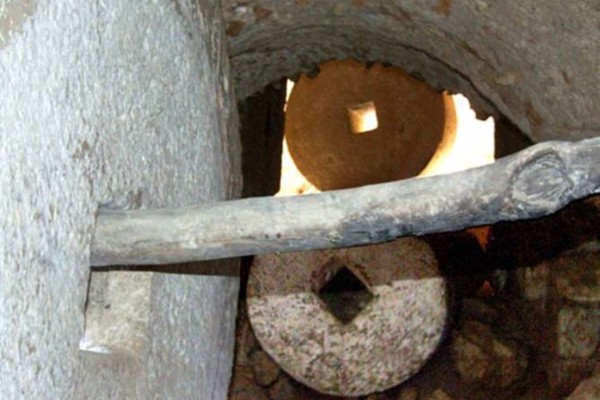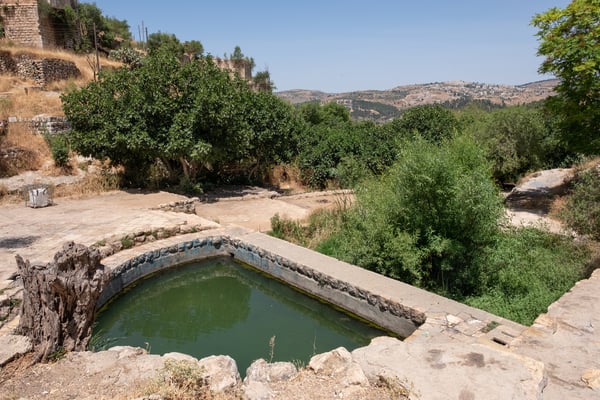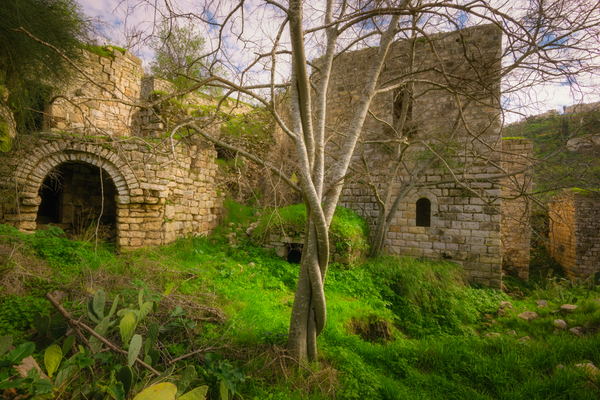Lifta’s central location offers Biblical heritage, a rich history, and great swimming.
By Nosson Shulman, Licensed Tour Guide
“And the border circled from the top of the mountain to the fountain of the Mei (water of) Neftoach, and went out to the cities of Mount Ephron; and the border circled to Baalah, which is Kirjath-jearim (Joshua 15:9)”
I often have the privilege of touring with visitors who feel they have seen most of the mainstream sites and want me to bring them to places rarely included in an itinerary.
One site checking that box, is the (almost perfectly) preserved ancient town of Lifta, right by the entrance to Jerusalem. In addition to its central location, this site offers everything from Biblical heritage, a rich history, great swimming, pastoral quiet, and an abandoned village where the buildings still stand at their original height.
In Biblical times, the town was called Mei Neftoach (literally translates to Waters of Neftoach) and was a border town between the tribes of Judah and Benjamin (see Joshua 15:19 and 18:15). It got its name because of the many springs and an abundance of water found here.
During the Great Jewish revolt (which climaxed with the destruction of the holy Second Temple, circa 70 CE) the city was destroyed by future Emperor Titus. In later Roman and Byzantine times, the town was rebuilt and called Neptho. During the Crusader times the town was called Clepsta, and impressive finds from this period were found.
Inside the crusader structure was found a well-preserved olive oil press, which was in use until the middle of the 20th century.
Most of the still standing homes we see now were once homes of wealthy Arabs during the Ottoman period.
Besides the many orchards and olive oil industry, the town’s inhabitants owned an abundance of land which the Jewish community of Jerusalem bought up bit by bit in the late 1800s and early 1900s. The Arab owners were usually unaware that they were selling land to Jews and would not have followed through with the transactions had they known the religion of the buyers.
Among the Jewish neighborhoods of Jerusalem built during this time were Nachlaot and the ultra-trendy Mahane Yehuda market.

An olive oil press found in near pristine condition inside of the Crusader room. (Israel Antiquities Authority via Nosson Shulman)
Unfortunately, the inhabitants of Lifta regularly took part in organized riots (often resulting in massacres) against unarmed Jews.
When the UN voted to form an independent Jewish state in November of 1947, Lifta’s location at the entrance to Jerusalem made it a strategic position for Arab snipers to fire on Jewish civilians entering the city.
In early 1948, the Arab Supreme Council asked Lifta’s civilians to leave so that they could eliminate the Jews quickly. The inhabitants were told it would take about six weeks, after which they could return. Many chose to “wait out” the war at winter homes located throughout the Middle East, such as Amman and Beirut.
With the residents gone, Arab militias entered the homes and used Lifta as a forward position to lay siege to Jerusalem. Due to the dangers the town posed, Lifta was taken over by the Jewish forces and then deserted of inhabitants (who were very hostile to the concept of a Jewish State).
Since 1948, the well-preserved town was all but abandoned and in 2017 it was declared a national park.
In 2021, plans were announced to built 259 new home units and a luxury hotel in this amazing and beautiful location.
On your next trip to Israel, if you are looking for something off the beaten track, Lifta should definitely be on your itinerary!
Nosson Shulman is a journalist and Licensed Tour Guide in Israel specializing in Biblical tours. To allow tourists to experience Israel during the Corona era, he created the new hit Israel tour video series, which brings Israel to the home of viewers by simulating actual tours. To check out his free sneak preview tour videos, click here. To view sample tour itineraries or to inquire about private tour opportunities with a personalized itinerary on your next trip to Israel, click here.

